|
|
Literary Interests and Writers:
The above map illustrates some of the many literary points of interest within Greenwich Village and SoHo. The suggested walking route indicated by the red line, takes the viewer on a walking tour through the great literary history of this area. The numbers along the route above, and described below, are a selection of some of the more interesting locations and stories about writers, authors, editors, and others associated with the written word that have connections to the area.
|
 |
1. Mark Twain (14 West 10th Street)
Mark Twain lived at this address in 1900, shortly after returning to the United States from Europe. Samuel Langhorne Clemens (November 30, 1835 - April 21, 1910), better known by the pen name Mark Twain, was an American humorist, satirist, lecturer and writer. Twain is most noted for his novels Adventures of Huckleberry Finn, which has since been called the Great American Novel, and The Adventures of Tom Sawyer.
|
 |
2. Edward Albee (50 West 10th Street)
Edward Albee lived in the carriage house at 50 West 10th during the sixties, and Hart Crane lived at 54 West 10th Street in 1917, he also lived at 25 East 11th in 1917. Edward Franklin Albee III (born March 12, 1928) is an American playwright known for works including Who's Afraid of Virginia Wolf?, The Zoo Story, The Sandbox and The American Dream. His works are considered well-crafted and often unsympathetic examinations of the modern condition.
|
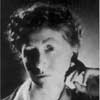 |
3. Marianne Moore (35 West 9th Street)
Marianne Moor lived in apartment 7B in this building. Her living room furnishings have been reassembled in a similar room at the Rosenbach Foundation in Philadelphia. Marianne Moore (November 15, 1887 - February 5, 1972) was a Modernist American poet and writer. Her most famous poem is perhaps the one entitled, appropriately, "Poetry", in which she hopes for poets who can produce "imaginary gardens with real toads in them."
|
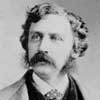 |
4. Bret Harte (16 Fifth Avenue)
In 1870 Bret Harte came east to live here with his sister. Bret Harte (August 25, 1836 - May 6, 1902) was an American author and poet, best remembered for his accounts of pioneering life in California.
|
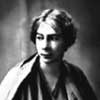 |
5. Sara Teasdale (1 Fifth Avenue)
Sara Teasdale lived here in 1932, and committed suicide here the following year. Sara Teasdale (August 8, 1884 - January 29, 1933), was an American lyrical poet. She was born Sarah Trevor Teasdale in St. Louis, Missouri. A common urban legend surrounds Teasdale's 1933 suicide. The legend claims that her poem "I Shall Not Care" (which features themes of abandonment, bitterness, and contemplation of death) was penned as a suicide note to a former lover. However, the poem was actually first published in her 1915 collection Rivers to the Sea, a full 18 years before her suicide.
|
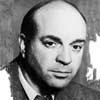 |
6.John Dos Pasos (14-15 Washington Mews)
John Dos Pasos rented a room here from Elaine Orr Cummings in 1922. Elaine Orr Cummings was the wife of E. E. Cummings. Painters also had studios here including Edward Hopper, William Glackens and Rockwell Kent. John Roderigo Dos Passos (January 14, 1896 - September 28, 1970) was an American novelist and artist. Considered one of the Lost Generation writers, Dos Passos' first novel was published in 1920. Titled One Man's Initiation: 1917 it was followed by an antiwar story, Three Soldiers, which brought him considerable recognition. His 1925 novel about life in New York City, titled Manhattan Transfer, was a commercial success and introduced experimental stream-of-consciousness techniques into Dos Passos' method. Over his long and successful career, Dos Passos wrote forty-two novels, as well as poems, essays, and plays, and created more than 400 pieces of art.
|
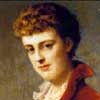 |
7. Edith Wharton (7 Washington Square North)
Edith Wharton lived here in 1882. After her father died, she and her mother returned here from Europe. Edith Wharton (January 24, 1862 - August 11, 1937) was an American novelist, short story writer and designer. Edith Wharton wrote several novels, including The House of Mirth (1905), the first of many chronicles of the true nature of old New York, she also entertained the cream of American literary society, including her close friend, the novelist Henry James.
Elaine Orr (3 Washington Square North)
Elaine Orr lived here before she was married to E. E. Cummings
|
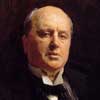 |
8. Henry James (19 Washington Square North, today it would be 18 if still standing)
Henry James spent many hours in this house (owned by his Grandmother) and used those experiences to draw the setting for Washington Square. Henry James (April 15, 1843 - February 28, 1916), was an American-born British author. He is one of the founders and leaders of a school of realism in fiction; the fine art of his writing has led many academics to consider him the greatest master of the novel and novella form. He spent much of his life in England and became a British subject shortly before his death. He is primarily known for a series of major novels in which he portrayed the encounter of America with Europe. His plots centered on personal relationships, the proper exercise of power in such relationships, and other moral questions. His method of writing from the point of view of a character within a tale allowed him to explore the phenomena of consciousness and perception, and his style in later works has been compared to impressionist painting. James wrote Washington Square (1880), a deceptively simple tragicomedy that recounts the conflict between a dull but sweet daughter and her brilliant, domineering father.
|
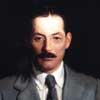 |
9. Edwin Arlington Robinson, The Judson (51 Washington Square South, now called Judson Hall)
The Judson was a hotel which had among its tenants Edwin Arlington Robinson in 1906. Edwin Arlington Robinson (December 22, 1869 - April 6, 1935) was an American poet, who won three Pulitzer Prizes for his work. When his father passed away in Maine, Edwin became the man of the household. He tried farming and developed a close relationship with his brother's wife. A confrontation ensued, and Robinson fled to New York, where he led a precarious existence as an impoverished poet while cultivating friendships with other writers, artists, and would-be intellectuals. In 1896 he self-published his first book, "The Torrent and the Night Before," paying 100 dollars for 500 copies. It was meant to be a surprise for his mother. Days before the copies arrived, however, Mary Palmer Robinson died of diphtheria.
|
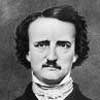 |
10. Edgar Allen Poe (85 West 3rd Street)
When Edgar Allen Poe lived here it was named 85 Amity Place. The front of the building which now exists as a solemn reminder of the building that was, was left to appease Villagers when New York University tore the building down for a new Law School. Edgar Allan Poe (January 19, 1809 - October 7, 1849) was an American poet, short-story writer, editor and literary critic, and is considered part of the American Romantic Movement. Best known for his tales of mystery and the macabre, Poe was one of the earliest American practitioners of the short story and is considered the inventor of the detective-fiction genre. He is further credited with contributing to the emerging genre of science fiction. He was the first well-known American writer to try to earn a living through writing alone, resulting in a financially difficult life and career.
|
 |
11. James Fenimore Cooper (145 Bleeker Street)
James Fenimore Cooper lived here in 1833, when the street was called Carroll Place. James Fenimore Cooper (September 15, 1789 - September 14, 1851) was a prolific and popular American writer of the early 19th century. He is best remembered as a novelist who wrote numerous sea-stories and the historical novels known as the Leatherstocking Tales, featuring frontiersman Natty Bumppo. Among his most famous works is the Romantic novel The Last of the Mohicans, which many consider to be his masterpiece.
|
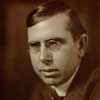 |
12. Theodore Desier (Thompson and Bleeker Streets)
Formerly the Mills Hotel, this was Dresier's first address in New York City when he came to New York in 1895. Dresier paid 25 cents a night for a bed. Theodore Herman Albert Dreiser (August 27, 1871 - December 28, 1945) was an American author of the naturalist school, known for dealing with the gritty reality of life.
|
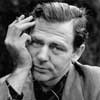 |
13. James Agee (172 Bleeker Street)
One of the writers that frequented the San Remo nearby, he had a floor-thru flat at the top of this building from 1941 to 1951. James Rufus Agee (November 27, 1909 - May 16, 1955) was an American novelist, screenwriter, journalist, poet and film critic. In the 1940s he was one of the most influential film critics in the U.S. His autobiographical novel, A Death in the Family (1957), won the author a posthumous Pulitzer Prize.
|
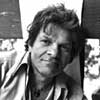 |
14. Gregory Corso (190 Bleeker Street)
The beat poet Gregory Corso was born in this tenement building in 1930. During the 1950's he was one of the writers that frequented the San Remo, a popular place for artists and writers of the time, located across the street on the Northwest corner of Bleeker and MacDougal. Gregory Nunzio Corso (March 26, 1930 - January 17, 2001) was an American poet, youngest of the inner circle of Beat Generation writers (with Jack Kerouac, Allen Ginsberg, and William Burroughs).
|
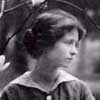 |
15. Edna St. Vincent Millay (25 Charlton Street)
In 1918 Edna St. Vincent Millay and her Mother and two sisters lived in this three-and-a-half-story house. Edna St. Vincent Millay (February 22, 1892 - October 19, 1950) was an American lyrical poet and playwright and the first woman to receive the Pulitzer Prize for Poetry. She was also known for her unconventional, bohemian lifestyle and her many love affairs (with both men and women). She used the pseudonym Nancy Boyd for her prose work. Her best-known poem might be "First Fig" from A Few Figs from Thistles (first published in 1920): My candle burns at both ends; It will not last the night; But ah, my foes, and oh, my friends--It gives a lovely light! Millay wrote the poem, which she first called "My Candle," at Romany Marie's cafe in Greenwich Village.
|
 |
16. James Agee (17 King Street)
James Agee bought this house in 1951, and lived here until his death in 1955. James Rufus Agee (November 27, 1909 - May 16, 1955) was an American novelist, screenwriter, journalist, poet and film critic. In the 1940s he was one of the most influential film critics in the U.S. His autobiographical novel, A Death in the Family (1957), won the author a posthumous Pulitzer Prize.
|
 |
17. Marianne Moore / Theodore Dressier / Sherwood Anderson (14 / 16 / 12 St. Luke's Place)
Marianne Moore and her mother lived in the basement apartment of 14 St. Luke's Place from 1918 to 1929. She also worked part time at the New York Public Library branch across the street prior to becoming editor of the Dial. Theodore Dressier lived at number 16 St. Luke's Place in 1922 and 1923, and Sherwood Anderson lived at number 12 in 1922.
|
 |
18. Edna St. Vincent Millay (75 1/2 Bedford Street)
This house is know as the "Edna St. Vincent Millay House", even though she lived here only briefly after her marriage to Eugen Boissevain. (See number 15 for information regarding Edna St. Vincent Millay).
|
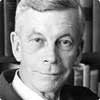 |
19. Mark Van Doren / Joseph Wood Krutch (43 Barrow Street)
Mark Van Doren and Joseph Wood Krutch shared an apartment here in 1920. Mark Van Doren (June 13, 1894 - December 10, 1972) was a Pulitzer Prize-winning poet and critic. Joseph Wood Krutch (pronounced krootch) (November 25, 1893 - May 22, 1970) was an American writer, critic, and naturalist. Both writers worked for The Nation during this time.
|
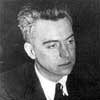 |
20. Hart Crane (45 Grove Street)
Hart Crane sublet a room in this building in 1919. It is said that he particularly liked it, and the Landmarks Preservation Commission has stated it is "undoubtedly one of the finest and largest Federal residences in Greenwich Village". Built in 1830, and remodeled in 1870, it was originally surrounded by grounds and it's own stables. Harold Hart Crane (July 21, 1899 - April 27, 1932) was an American poet. Finding both inspiration and provocation in the poetry of T. S. Eliot, Crane wrote poetry that was traditional in form, difficult and often archaic in language, and which sought to express something more than the ironic despair that Crane found in Eliot's poetry. Though frequently condemned as being difficult beyond comprehension, Crane has proved in the long run to be one of the most influential poets of his generation.
|
 |
21. Thomas Paine / Vance Bourjaily (59 Grove Street / 49 Grove Street)
Thomas Paine moved to this area in 1808, to a house that would have been on Bleeker Street (then called Herring Street). When he fell ill he stayed with an old friend Madame Bonneville, and a month later died in the back room at the house that would be at 59 Grove Street.Thomas Paine (Thetford, England, 29 January 1737 - 8 June 1809, New York City, U.S.) was an English pamphleteer, revolutionary, radical, inventor, and intellectual. Thomas Paine is The Father of the American Revolution because of Common Sense, the pro-independence monograph pamphlet he anonymously published on 10 January 1776; it quickly spread among the literate, and, in three months, 120,000 copies sold throughout the American British colonies (with only two million free inhabitants), making it a best-selling work in eighteenth-century America.The pamphlet convinced colonists, including George Washington and John Adams, to seek independence from the Kingdom of Great Britain, without compromise. Vance Bourjaily lived at 49 Grove Street in the 1950's. While living there he regularly entertained writers such as Merle Miller, Louis Auchincloss, Gore Vidal, William Styron, and James Jones.
|
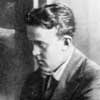 |
22. John Reed (147 West 4th Street)
This site was the second restaurant of Polly Holliday. John Reed wrote the articles that became the book Ten Days That Shook the World in an upstairs room. John "Jack" Silas Reed (October 22, 1887 - October 19, 1920) was an American journalist, poet, and communist activist, famous for his first-hand account of the Bolshevik Revolution, Ten Days that Shook the World. He was the husband of the writer and feminist Louise Bryant.
|
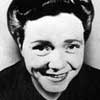 |
23. Ruth McKenney (14 Gay Street)
Gay Street was made popular in Ruth McKenney's comedy My sister Eileen, which was based on her sister Eileen who married Nathanael West in 1940, and lived at 14 Gay Street. Ruth McKenney (November 18, 1911 - July 27, 1972) was an American author and journalist, best remembered for My Sister Eileen, a memoir of her experiences growing up in Ohio and moving to Greenwich Village with her sister Eileen McKenney. This was later adapted as the musical Wonderful Town by Leonard Bernstein.
Mary McCarthy lived at 18 Gay Street.
|
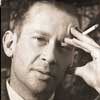 |
24. E. E. Cummings (4 Patchin Place)
E. E. Cummings lived at number 4 Patchin place, the quaint private alley, from 1923 until his death in 1962. Edward Estlin Cummings (October 14, 1894 - September 3, 1962), popularly known as E. E. Cummings, was an American poet, painter, essayist, author, and playwright. His body of work encompasses more than 900 poems, several plays and essays, numerous drawings, sketches, and paintings, as well as two novels. He is remembered as a preeminent voice of 20th century poetry, as well as one of the most popular.
Djuna Barnes lived at number 5 Patchin Place since the early 1940's. Djuna Barnes (June 12, 1892 - June 18, 1982) was an American writer who played an important part in the development of 20th century English language modernist writing and was one of the key figures in 1920s and 30s bohemian Paris after filling a similar role in the Greenwich Village of the teens. Her novel Nightwood became a cult work of modern fiction, helped by an introduction by T. S. Eliot. It stands out today for its portrayal of lesbian themes and its distinctive writing style. Since Barnes's death, interest in her work has grown and many of her books are back in print.
|
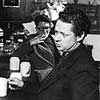 |
25. Dylan Thomas (567 Hudson Street, The White Horse Tavern)
The White Horse Tavern has had a long association with writers including Norman Mailer, and Dylan Thomas. Another pub that has had a long association with writers was Chumley's at 86 Bedford. Unfortunately due to reckless work in the adjacent building that caused walls and the chimney to collapse, Chumley's has closed. Dylan Marlais Thomas (27 October 1914 - 9 November 1953) was a Welsh poet. In addition to poetry, he wrote short stories and scripts for film and radio, which he often performed himself. His public readings, particularly in America, won him great acclaim; his booming, sometimes ostentatious voice with a subtle Welsh lilt, became almost as famous as his works. His best known works include Under Milk Wood and Do not go gentle into that good night, a poem written in 1951 about his dying father. On November 5th 1953, after several drinks at the White Horse Tavern, Thomas began to feel ill. He decided go back to his room at the Hotel Chelsea, where he later collapsed and slipped into a coma. An ambulance was called, which took him to St Vincent's Hospital. Thomas died four days later. The most popular myth is that Thomas' last words were, "I've had eighteen straight whiskies, I think that is a record." |
|
|
|



